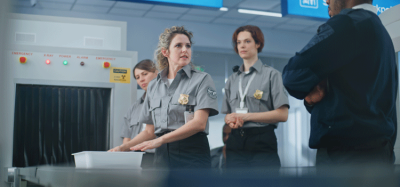Dangerous Goods, The hidden risks to commercial aviation
Posted: 26 January 2011 | Geoff Leach, Manager of the Dangerous Goods office at the UK Civil Aviation Authority (CAA) | No comments yet
11 May 1996. After a delay caused by a mechanical problem Valujet flight 592, a Douglas DC-9-32 with 105 passengers and five crew onboard pushes back from the gate at Miami International Airport for departure to Atlanta.
Twenty minutes later, after taxiing to runway 9 Left, the aircraft is airborne but after only six minutes the flight crew receive indications of significant electrical malfunctions. Shortly after, screams from the cabin of “fire” are recorded on the cockpit voice recorder, with a flight attendant heard to say that the cabin was “completely on fire”. Three minutes after the first indication of a problem the aircraft crashes into the Everglades. There are no survivors.
11 May 1996. After a delay caused by a mechanical problem Valujet flight 592, a Douglas DC-9-32 with 105 passengers and five crew onboard pushes back from the gate at Miami International Airport for departure to Atlanta.
Twenty minutes later, after taxiing to runway 9 Left, the aircraft is airborne but after only six minutes the flight crew receive indications of significant electrical malfunctions. Shortly after, screams from the cabin of “fire” are recorded on the cockpit voice recorder, with a flight attendant heard to say that the cabin was “completely on fire”. Three minutes after the first indication of a problem the aircraft crashes into the Everglades. There are no survivors.
The cause of the accident was the improper carriage in the cargo hold of chemical oxygen generators, the devices fitted in the passenger cabin to provide oxygen in the event of a depressurisation. Pulling an oxygen mask to the face causes a candle of sodium chlorate in the generator to ignite, resulting in the production of oxygen. However, as a consequence, the generator gets extremely hot (in excess of 280°C) and whilst this does not pose a danger when fitted to the aircraft the temperature is such that any combustible material, such as packaging, which comes into contact with the generator can ignite, the flame then being fed by the oxygen the generator is designed to produce.
Join us live: Shaping the Next Generation of Hold Baggage and Air Cargo Screening
Join us live for an insightful webinar on 11th December at 14:00 GMT, in collaboration with Smiths Detection, as we explore the strategic balance of operational efficiency, regulatory compliance, and sustainability in high-volume security environments.
This session offers a focused look into future-proofing your security strategy.
Key learning points
- Cost Reduction: Strategies to minimize bag travel time while simultaneously reducing operational costs.
- Regulatory Roadmap: Insights into the next wave of regulatory changes and their impact on future investment decisions.
- Sustainable Systems: Practical approaches to building sustainability into security systems and lowering the total cost of ownership (TCO).
- Scalable Solutions: Real-world examples of scalable systems supporting current airport growth and preparing for tomorrow.
Register now for expert insights, case studies, and actionable strategies on operational efficiency!
Chemical oxygen generators are just one example of items which meet the criteria of dangerous goods. Such goods are routinely and regularly carried on both passenger and freighter aircraft as cargo and comply with a set of requirements produced by ICAO, known as the ‘Technical Instructions’, ensures that no danger is posed to the aircraft or its occupants. The Valujet accident was a stark illustration of how dangerous goods can cause a catastrophe if they are not prepared for transport in accordance with the Technical Instructions. This was not the first fatal accident to be caused by dangerous goods. In 1973, the three-crew members of a Pan Am Boeing 707 freighter were killed when the aircraft crashed following an in-flight fire caused by an improperly prepared consignment of nitric acid.
Dangerous goods fall within one of nine classes:
Class 1: Explosives (e.g. ammunition flares)
Class 2: Gases (e.g. oxygen, propane)
Class 3: Flammable liquids (e.g. paint, adhesives)
Class 4: Flammable solids and reactive substances (e.g. matches, magnesium)
Class 5: Oxidizers and organic peroxides (e.g. chemical oxygen generators, resin kits)
Class 6: Toxic and infectious substances (e.g. cyanide, infected blood)
Class 7: Radioactive substances (e.g. radio-pharmaceuticals)
Class 8: Corrosives (e.g. wet batteries, mercury)
Class 9: Miscellaneous (e.g. vehicles, lithium batteries)
The transport of dangerous goods by air in cargo is not only very important for international commerce, but also for other reasons such as public health. This is particularly relevant to radioactive material, much of which is shipped for the treatment or diagnosis of disease. Failure of radioactive material to travel as booked can and has caused potentially life saving surgical procedures to be cancelled.
The dangers posed by passengers
It is not only dangerous goods in cargo which can pose a danger to flight safety. Over the years passengers have carried numerous items which have had the potential to cause a catastrophe, such as petrol fuelled chainsaws, fireworks and even phosphorus grenades. Generally, passengers are not allowed to carry dangerous goods as part of their baggage, although there are a few exceptions; items which may be carried (subject to quantity limitations) include toiletry or medicinal items (including aerosols), alcoholic beverages and lithium batteries such as those used to power lap top computers, mobile phones, etc.
The education of passengers in this respect is very difficult, a task made no easier by the understandable priority given to security since the terrorist attacks of 9/11. Since that time much emphasis has been placed on the need for ‘sharps’ and other items restricted for security reasons to be placed in checked (hold) baggage. But dangerous goods generally pose the same danger to aircraft wherever they are carried and so most are not permitted at all.
Experience has shown that it is very difficult to convey to passengers the difference between dangerous goods and items restricted for reasons of security, with many still failing to appreciate that not everything can be packed in the hold. Indeed, there are dangerous goods which are only permitted if they are carried in the cabin and nowhere else, the most notable of these being safety matches and lighters – passengers may carry a small packet of safety matches or a single lighter provided they are carried on the person e.g. in a pocket. This is so that if these items were to ignite during flight this would be readily apparent (not least to the passenger) and cabin crew would be on hand to deal with the incident. The same would not be so in the hold of an aircraft where the onboard fire detection and suppression systems would have to be relied on. Fires in baggage caused by lighters and matches are not uncommon, with over 50 being recorded over a 25 year period in the United Kingdom alone.
Another important aspect relating to passengers, and one which may involve airport operators, is the carriage of battery powered wheelchairs. In 2008 at Manchester Airport, ground staff unloading baggage from the forward hold of a Boeing 757 noticed blue sparks coming from such a wheelchair. The chair was removed from the aircraft and placed on a vehicle, where it immediately burst into flames and was destroyed. The cause of the fire could not be determined, although investigations revealed a misunderstanding in the industry about how battery powered wheelchairs must be prepared for transport. The ICAO Technical Instructions require the batteries on such wheelchairs to be protected against short circuit but this was being misinterpreted as a need to disconnect the battery, which is not necessarily required, and if not done properly can in fact increase the risk of fire. Further details can be found at www.CAA.co.uk/fodcom4508.
The role airport operators can play
When the requirements of the ICAO Technical Instructions are adhered to the transport of dangerous goods by air is a very safe activity and there are a number of ways that airport operators can contribute to ensuring these remains so:
In Cargo
As required by Annex 14 to the Chicago Convention (‘Aerodromes’), the aerodrome emergency plan must provide for the coordination of the actions to be taken in an emergency (such as a dangerous goods occurrence) at an aerodrome or in its vicinity. An essential element of this is that procedures are in place to ensure that details of any dangerous goods onboard an aircraft involved in an emergency, which have either been transmitted to the airport via Air Traffic Control or are held by the operator or his agent at the airport are passed to the Rescue and Fire Fighting Services as soon as possible.
In passenger baggage
Notices warning passengers of dangerous goods which are forbidden from carriage on board an aircraft, must be prominently displayed, in sufficient number, at each of the places at an airport where tickets are issued, passengers are checked in and aircraft boarding areas are maintained, and at any other location where passengers are checked-in. ICAO places this requirement on both the airline and the airport operator and it is essential that neither is impeded in this duty (there have been occasions when an airline has been prevented from displaying notices by the airport operator).
Alternative methods of advising passengers of forbidden dangerous goods can be employed e.g. display cabinets containing examples of forbidden dangerous goods, advisory videos which can be played at various locations at the airport (e.g. while passengers are waiting to be security screened), airport web sites which can contain details of what a passenger may or may not carry.
It is important that airport security staff are appropriately trained in dangerous goods, not so that they actively search for such items but so they recognize forbidden dangerous goods when they come across them.
International standards exist to ensure potentially dangerous items are carried correctly on board aircraft. Any breach of the regulations, whether intentional or accidental, can cause major disruption at busy airports and endanger passengers and staff both on the ground and in the air. Everyone in commercial aviation should be aware of what is and is not allowed for carriage on an aircraft and enforce those rules vigorously.
About the Author
Geoff Leach is the Manager of the Dangerous Goods Office at the United Kingdom Civil Aviation Authority. He currently chairs the ICAO Dangerous Goods Panel and the Dangerous Goods European Liaison Group.
Join our free webinar: Beyond silos: How ecosystem thinking elevates the airport experience
In today’s complex aviation landscape, airports are moving beyond siloed operations to embrace a new era of collaboration. This webinar focuses on how leading airports are using ecosystem thinking to adapt, personalize, and continuously improve every touchpoint, boosting both passenger satisfaction and non-aeronautical revenue.
Date: 13 Nov | Time: 10:00 GMT
REGISTER NOW TO SECURE YOUR SPOT
Can’t attend live? No worries – register to receive the recording post-event.


















